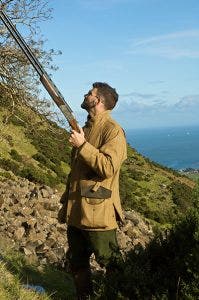One of the first things I do when starting a training plan with new customers is to set a list of goals they wish to achieve over the coming season, followed by what you might call a ‘shooting basics health check'.
This isn’t anything especially exciting but I do think it is vital to get the basics right from the start, highlight any problem areas and give a solid platform from which to progress from through to next season.
To start the new year off, I am going to run over some of these points so you can have a little more structure to your shooting and a platform to work from going forward should you wish to kick on a little bit for the year ahead.
Ed's Guide to Improving Your Shooting
Eyes
 Your eyes are one of the most important areas of interest, and one of most often overlooked (pardon the pun!).
Your eyes are one of the most important areas of interest, and one of most often overlooked (pardon the pun!).
It does of course stand to reason if your eyes aren’t working at their best then you will never be able to shoot at your best. Over the past five years I have been working in conjunction with Ed Lyons who has helped countless shooters, myself included, get the most from their eyes. This not only includes a two to three-hour in-depth exam, but Ed is also able to custom-tint lenses in shooting specific styles and offer advice on all things ocular.
One very important aspect of this is eye dominance. Eye dominance is not fixed and can change as you age, as well as with fatigue, hydration and stress. A small shift in dominance can cause big problems for your shooting, however it is very easy to correct, so if you were to do only one thing on my list to improve your shooting ahead of next season arrange to see Mr Lyons!
Gun Fit
I am a firm believer that for most people, ‘close enough is good enough’ when it comes to gun fit as few people have a consistently good enough mount to truly fit a gun accurately.However, there are certain dimensions that can cause serious shooting issues and a competent and knowledgeable coach can pick up on these and offer suggestions to get the stock tweaked to make life a lot easier.
If you find your shooting has tailed off over time and you have ruled out visual problems, gun fit is my next basic to check. The gun that fitted you perfectly three seasons ago may no longer be appropriate, especially if you have gained or lost weight, or changed shooting style/mount. Even a change in clothing can have an impact - if you had your gun fitted at the start of the grouse season you probably had a light shirt on, perhaps a tweed vest. At the back end of the season you may well have had on a base layer, shirt, jumper, fleece and heavyweight jacket. This effects stock length by no small measure and this has a knock-on effect to drop and cast at face and head position, all of which will impact your results.
Problem Birds
The next area to look at is a little bit of self-analysis.You should already be aware if there are certain presentations of birds (be they clay or game) that cause you more problems than others. If it helps, keep a notebook handy with your shooting kit to keep an up-to-date list of what you perceive to be problems.
This is the first step towards addressing your issues with a coach and it will help your instructor get to the bottom of any issues faster. The more information the better: is one side stronger that the other? Is it always straight birds causing problems? Stopping the gun on left-to-rights but not right-to-lefts? All these have a root cause and once you make a list of problems they become easier to deal with. You wouldn’t go to the doctors without a list of symptoms, so don’t do the same with a shooting coach!
Practice
 I can’t think of any activity where you can make meaningful progress without practice, and shooting is no different.
I can’t think of any activity where you can make meaningful progress without practice, and shooting is no different.
The key for me is to have structured, focussed practice, as opposed to just pulling the trigger x number of times and making your way home. If you have had lessons, you should either get a training plan or some key points to focus on to address any issues in your technique. This may be something as simple as working foot position better, ingraining a new technique for applying lead, or slowing the mount down and getting the hands working better together.
If you haven’t been given a plan, try and focus on the basics: foot position; good controlled mount (don’t rush); slow, smooth swing and focussing hard on the target, making sure you finish the shot.
Whatever happens don’t be the guy on the first day of the season who hasn’t picked a gun up since late January - you won’t be doing yourself any favours!



